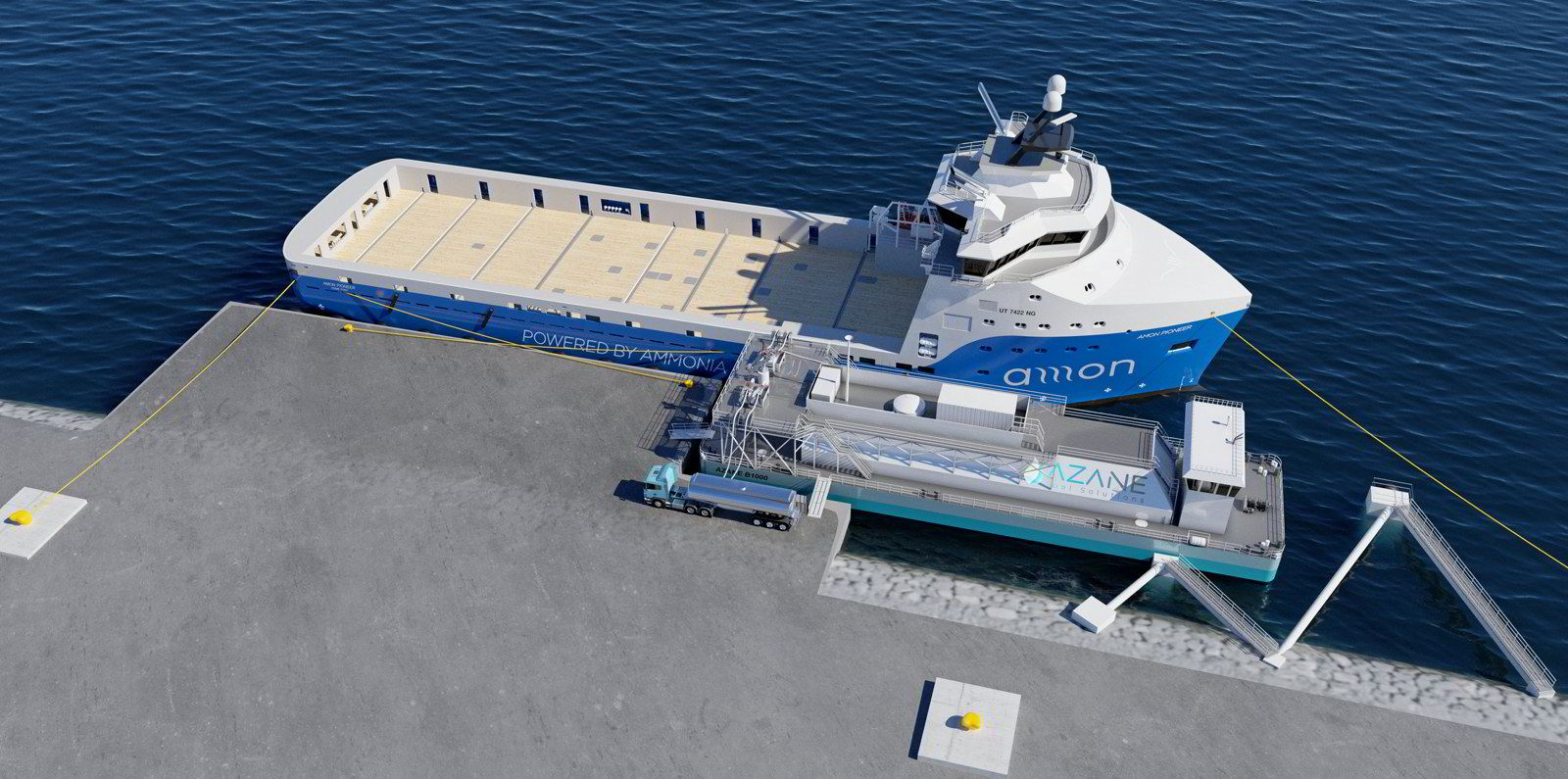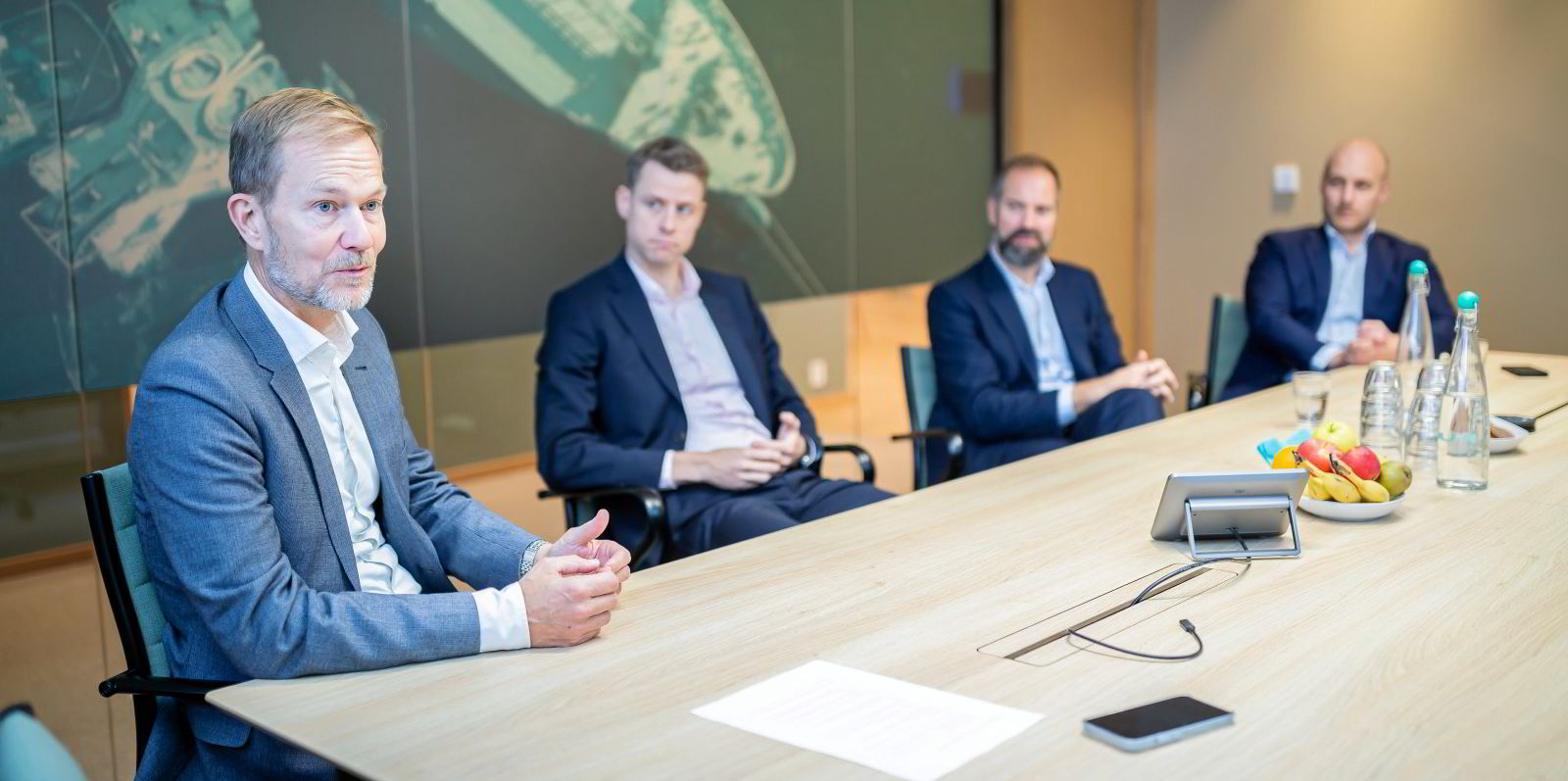Is a multi-fuel future on the cards for shipping?
How about a multi-fuel medium-term?
Azane Fuel Solutions chairman Andre Risholm admits it is many years away, but he believes that shipping eventually will want one carbon-free fuel: ammonia.
“I think we will have multi-fuel during the transition period, but the transition will be long,” Risholm told TradeWinds at Azane’s new offices in the shipping-heavy Oslo neighbourhood of Skoyen.
“But then over time, you will start to decrease this wide array, as well. I think in the long-run, only a carbon-free fuel will be accepted. Then we’re talking many years down the line.”
Risholm’s comments come after Azane received a €5.4m ($5.8m) investment from New York-listed Navigator Holdings and Yara Growth Ventures, each grabbing a 14.5% stake in the ECONNECT Energy and Amon Maritime-backed outfit.
The move pushes Azane into the construction phase of its plan to build 15 ammonia bunkering barges to support alternative fuelling efforts with Yara Clean Ammonia-provided bunkers first in Scandinavia, then internationally.
“I would say some of the companies that are investing now in methanol-fuelled vessels are saying, ‘this is a transition fuel for us. We can do this now and it will be one of the best solutions for a long time, but it’s not a 2050 solution’,” Risholm said.
“It needs to be a molecule that does not contain carbon.”
For his part, Navigator chief executive Mads Peter Zacho thinks there will be a host of fuels available for shipping as it works to get to net zero in accordance with the IMO’s 2050 goals.
But like Risholm, he thinks ammonia will be a big part of the fuel mix.
“I think ammonia is the best candidate because it doesn’t contain a [carbon atom] and it can be ramped up in terms of production volumes probably faster than any of the other candidates for green fuels,” Zacho said.
“I think it’s going to be a very large, important part of the energy mix and we want to be here to try and drive that development and have that ramp up as quickly as possible.”

Despite the slight disagreement over ammonia’s place moving forward, both agree on another key question: supply.
Risholm said there was room for ammonia production to grow right now, with global production capacity amounting to 250m tonnes per year, but only 180m tonnes actually produced.
“So there is already quite a lot of capacity that you can increase if the shipping demand grows fast,” he said.
“Of course, that is let’s say, grey ammonia. But still, the molecule, you can get it. Then that will drive demand for new green and blue plants.”
So-called grey ammonia uses natural gas in production and is the dominant method of production currently.
Blue ammonia also uses natural gas, but includes carbon capture to reduce carbon emissions in production. Green ammonia uses hydrogen from water electrolysis in production, removing carbon entirely.
Despite its use in production, when burned ammonia produces no CO2 emissions.
“There’s been a lot of scepticism around ammonia as a marine fuel,” Zacho said.
“We’re getting to terms with, yes it can be done and can it be done in a safe way? Now, of course, it’s up for the production to start happening and we’re seeing all these different projects happening in the Middle East, North America and elsewhere, pretty much all over the world, Norway as well.
“All those different concerns that have been validly put on the table [are] being worked out.”





